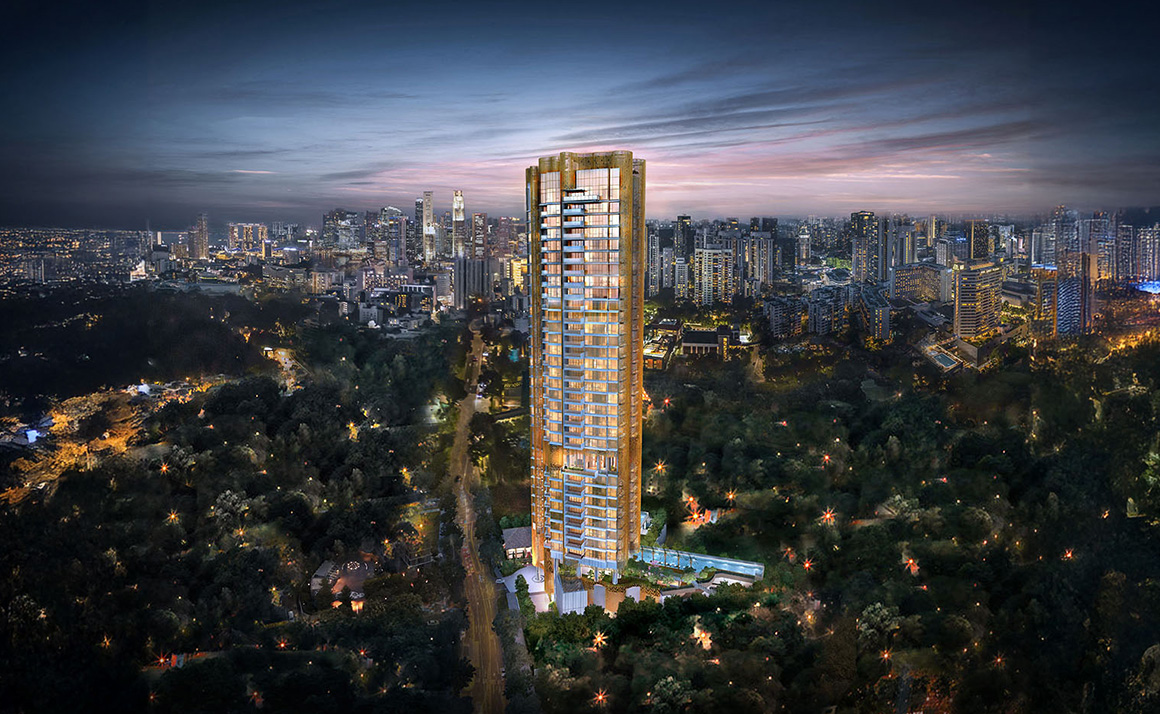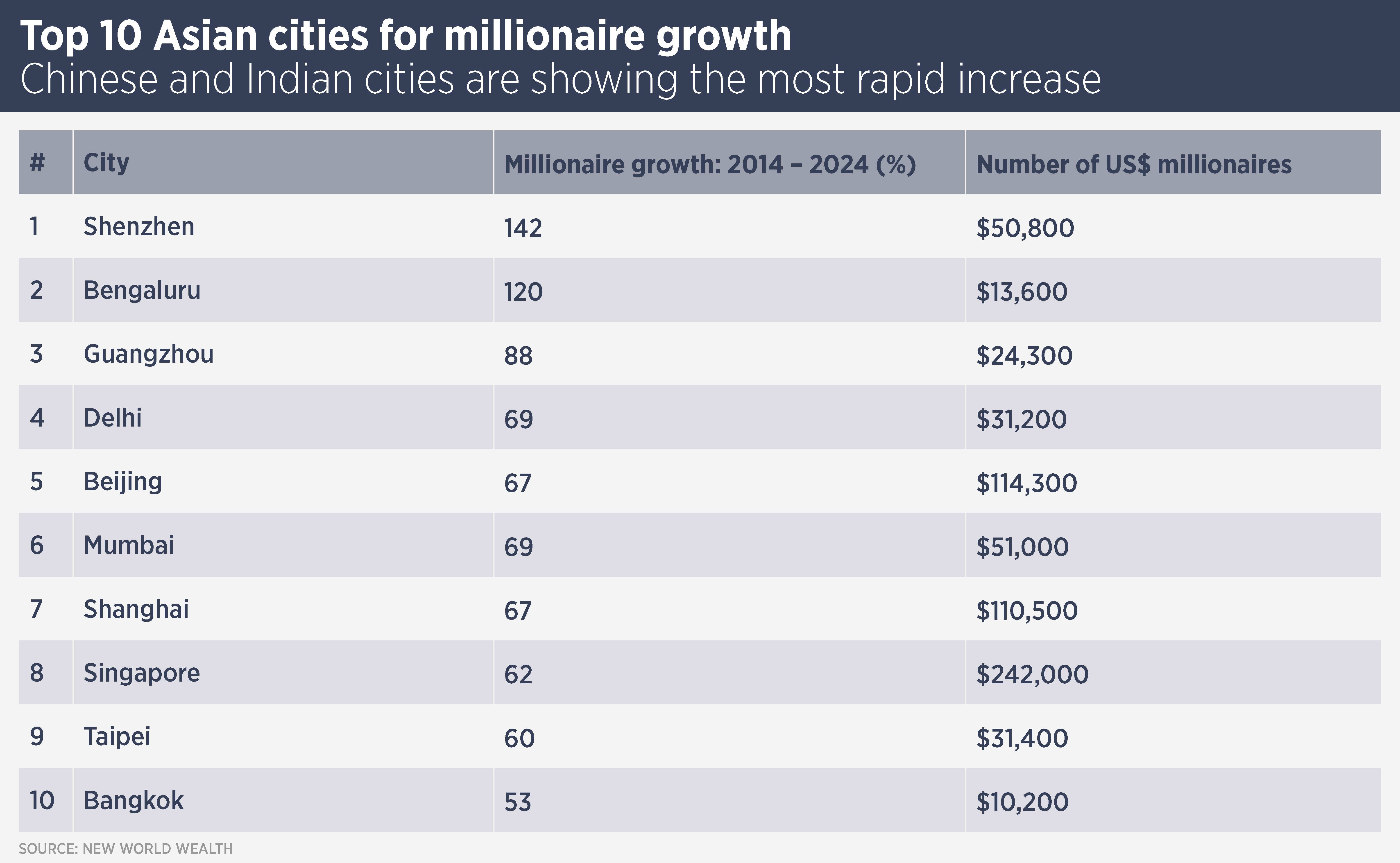
Asia’s booming millionaire factories
Discover how Asia’s booming millionaire class is driving real estate investment in top cities like Singapore, Tokyo, Shenzhen, and beyond.
Asian cities are at the forefront of global wealth creation, with millions of new millionaires created over the past decade; this will generate investment in commercial and residential real estate across the region and worldwide.
Research from Henley & Partners and New World Wealth found that Asia was home to three of the world’s wealthiest cities in 2024: Tokyo, Singapore and Hong Kong, with a total of nearly 700,000 US dollar millionaires between them.
However, Asia’s presence was more notable in the table of cities with the most growth in millionaire numbers between 2014 and 2024. Shenzhen was top of the list, with growth of 142% to 50,800 millionaires and there were 10 Asian cities in the top 25 fastest growers. The remainder were mainly either North American or Middle Eastern cities.
“It is hard to overestimate the investment potential which is generated when tens of thousands of people become millionaires,” says Simon Smith, Head of Regional Research & Consultancy at Savills Asia Pacific. “Wealthy individuals are more inclined to invest in real estate, both for their own use and for investment.

While fast-growing cities such as Mumbai and Guangzhou are adding millionaires at a rapid rate, developed Asian cities such as Singapore are also growing rapidly. Despite a population of only six million, Singapore hosted 242,000 millionaires in 2024, growth of 62% since 2014.
This growth is encouraging the development of new luxury residential developments, such as Klimt Cairnhill (pictured top) where Savills is marketing a 5,290 sq ft five bedroom apartment (price on application).
New World Wealth also found that Asian cities are creating new “centimillionaires” with assets of more than $100 million. For example, Shenzhen has 154 centimillionaires and Shanghai 293. The two cities also boast more than 50 billionaires between them.
“People with a net worth of more than $100 million are far more likely to invest in real estate and can make substantial plays which extend far beyond traditional high end residences,” says Smith. “Meanwhile billionaires can invest at almost institutional scale.”
Research from CapGemini estimated that high net worth individuals – those with more than $10 million in net assets – have 19% of their wealth invested in real estate.
China is notable for generating substantial numbers of billionaires. For example, both Beijing and Shanghai each have fewer millionaires than Singapore, but more billionaires. This is partially a reflection of the scale of the Chinese economy but also of the wealth being generated by booming tech businesses. Shenzhen is becoming known as the “Silicon Valley of Asia” thanks to its growing tech sector.
“Current market upheaval means that private investors will be cautious, but also conscious of the long-term stability of real estate investments,” Smith says. “The asset class offers both growth potential and wealth protection, especially in gateway cities. Cities such as London and New York remain popular with wealthy Asians, while Tokyo is becoming a hot spot for wealth from elsewhere in this region.”
Further reading:
Savills Asia International Residential Properties
Contact us:
Simon Smith



